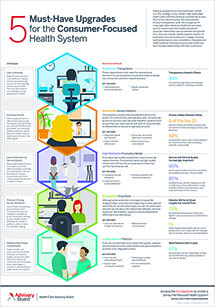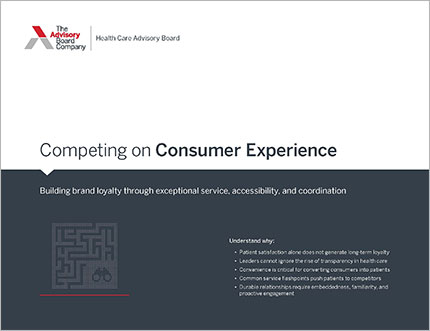The health care industry is spending more on promotional advertising than ever before, with annual spending on health care marketing nearly doubling from 1997 to 2016, according to a study published Tuesday in JAMA.
Study details
For the study, researchers examined direct-to-consumer (DTC) marketing data from Kantar Media, which tracks major media in local and nation markets, as well as professional drug promotion data—medical journal advertising, detailing, and free samples—from IQVIA Institute for Human Data Science.
The researchers sought to get a better picture of how health care industry stakeholders are spending marketing dollars on prescription drugs, disease awareness campaigns, health services, and laboratory tests.
Key findings
Overall, total annual health care spending on marketing rose from $17.7 billion in 1997 to $29.9 billion in 2016.
The researchers found direct marketing to doctors accounted for the bulk of annual marketing spending in both 1997 and 2016. But in 2016 provider-targeted marking made up a smaller share of total annual marketing spending than it did in 1997.
According to the study, 88%, or $15.6 billion, of the $17.7 billion spent on health care marketing in 1997 targeted health care providers. In comparison, 68%, or $20.3 billion, of the $29.9 billion spent in 2016 went to marketing to health care providers.
The researchers found direct-to-consumer (DTC) advertising saw "the most rapid change in spending." DTC advertising increased from $2.1 billion in 1997 —when it comprised 11.9% of total spending—to $9.6 billion in 2016, when it comprised about 32% of total spending.
The researchers found increases DTC prescription drug advertising fueled that growth. Researchers noted that DTC prescription drug advertising spending grew from $1.3 billion in 1997 to $6 billion 2016. The number of DTC prescription drug ads also surged from 79,000 in 1997 to 4.6 million in 2016, including 663,000 television ads. The authors noted the change followed "a shift toward advertising high-cost biologics and cancer immunotherapies."
In addition, the study found a significant increase in marketing from genetic test manufacturers, such as AncestryDNA. The number of ads for genetic testing increased from 14,100 in 1997 to 255,300 in 2016. Overall spending on genetic test marketing increased as well, from $75.4 million in 1997 to $82.6 million in 2016.
The researchers also looked at the different media used for medical marketing.
Steven Woloshin, co-author of the study and the co-director of the Center for Medicine and Media at the Dartmouth Institute for Health Policy and Clinical Practice, noted that medical advertising wasn't limited to television and radio. In fact, some online marketing encourages patients to diagnose themselves. For example, the website for Restasis, a drug that treats dry eyes, offers patients the ability to take a quiz to determine if they need eye drops. The website also directs patients to find doctors near them, many of whom have taken gifts from Allergan, Restasis' manufacturer, Woloshin said.
Discussion
Woloshin suggested the increases in marketing spending could be fueling increases in health care spending overall. "Marketing drives more testing. It drives more treatments. It's a big part of why health care is so expensive, because it's the fancy, high-tech stuff things that get marketed," he said.
Shannon Brownlee, SVP of the Lown Institute, who was not involved in the study, said consumers often bear the costs of money spent on medical advertising "through higher prices for drugs and hospital services. Marketing is built into the cost of care."
Woloshin also warned that marketing can give consumers false expectations for their drugs. "While marketing may have positive effects like destigmatizing diseases (e.g., HIV) or embarrassing symptoms (e.g., impotence), it can also expand or even create disease or raise false hopes by exaggerating treatment effects," he said. "This can lead to overdiagnosis, overtreatment (with associated harms) and wasted resources."
Holly Campbell, a spokesperson for the Pharmaceutical Research and Manufacturers of America, said its ads provide "scientifically accurate information to patients" and "increase awareness of the benefits and risks of new medicines and encourage appropriate use of medicines."
Similarly, Amy Rose, a spokesperson for Allergan, said its ads "do not displace the patient-physician relationship, but enhance them, helping to create a well-informed and empowered consumer and patient communities."
Regardless, Howard Bauchner, editor-in-chief of JAMA, said it's important for providers to be aware of the amount of medical marketing. "Since DTC advertising is legal in the U.S. it is important for patients to discuss anything that they read, see (TV ads) or hear with their clinician," he said. "It is difficult in adverts to present a complete analysis of risk and benefit of any drug, device, or test" (Szabo, Kaiser Health News, 1/8; Rapaport, Reuters, 1/8; Schwartz/Woloshin, JAMA, 1/8).
Learn how to build patient brand loyalty
A comprehensive consumer experience strategy is a must for today's hospitals and health systems—but focusing on patient satisfaction alone is not enough.
This study explores how to build brand loyalty—the ultimate measure of success—through exceptional service, accessibility, and coordination.
Don't miss out on the latest Advisory Board insights
Create your free account to access 2 resources each month, including the latest research and webinars.
Want access without creating an account?
You have 2 free members-only resources remaining this month remaining this month.
1 free members-only resources remaining this month
1 free members-only resources remaining this month
You've reached your limit of free monthly insights
Become a member to access all of Advisory Board's resources, events, and experts
Never miss out on the latest innovative health care content tailored to you.
Benefits include:
You've reached your limit of free monthly insights




